Clearly there is only one way to celebrate the end of the semester. With the return of Sunday Chess Problem! For our return to the world of chess composition, I have chosen a charming, but not too complex, direct mate problem. It was composed by O. Strerath in 1948. White is to play and mate in two:

Remember that white is always moving up the board, while black is always moving down. Horizontal ranks are numbered 1--8 from bottom to top, while vertical files are labeled a--h from left to right. So, in the diagram white's king is on g3, while black's king is on c5.
We'll cut right to the chase by noting that the key move is 1. Qg2!
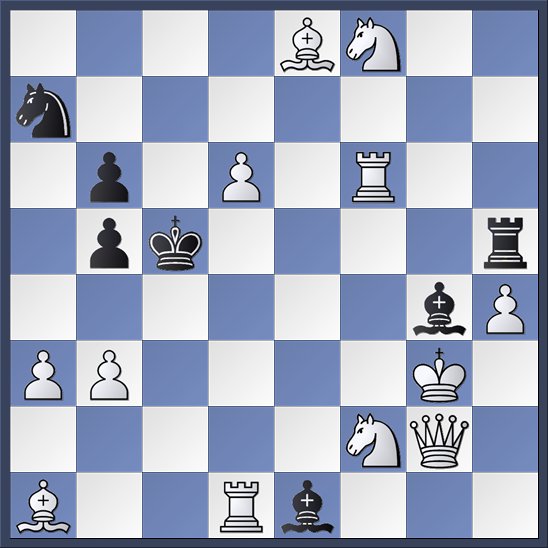
This move guards d5, and therefore threatens 2. Bd4 mate, as shown below.
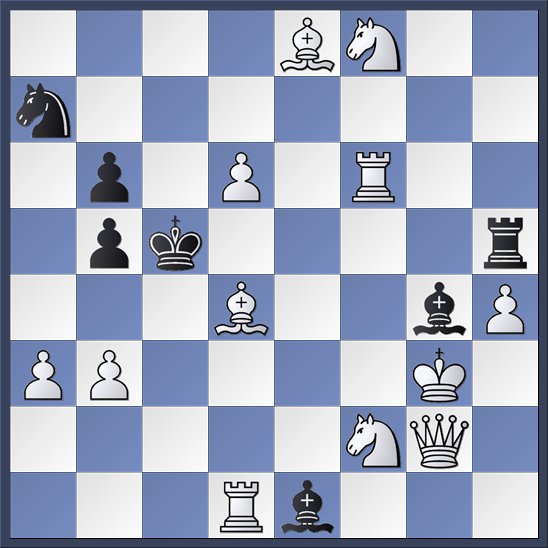
Notice that white could not have played 1. Bd4+, since this move would have cut-off his rook on d1, thereby creating a flight square for the black king on d5.
Black has several defenses to consider. Two of them are 1. ... Bd2 and 1. ... Bc3. These defend by cutting off the white rook on d1 and the white bishop on a1 respectively. But now we must give careful thought to how white will respond. You see, moves by the black bishop on e1 unpin the white knight on f2. At first blush, you might think that this gives white two possible responses: 2. Nd3 mate and 2. Ne4 mate. Problemists refer to this sort of situation, where one of the players has more than one way to achieve his goal, as a dual. Duals are pretty much always a weakness in a problem. If the dual occurs in one of the thematic lines it is often enough to render the problem worthless. (If it happens in a side variation it might be tolerable, but purists will still turn up their nose.)
Happily, in this problem we only appear to have a dual. Look more closely. If black defends with 1. Bd2, then white must reply with 2. Nd3 mate.

Do you see why 2. Ne4 would not be mate? We would then have this position:

Suddenly black's king can escape to d5! The reason is that the black bishop cuts off the rook's defense of d5, while the knight move to e4 cuts off the queen's defense of d5. That's why the white knight must choose d3 as its destination square.
If black instead chose to defend with 1. ... Bc3, then white must play 2. Ne4 mate.
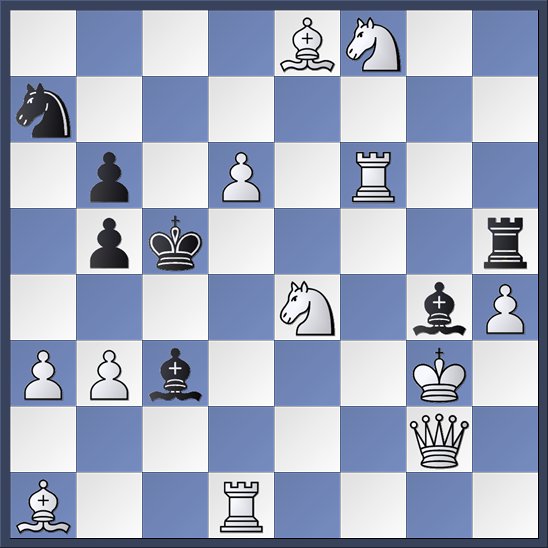
Playing 2. Nd3, leading to the next diagram, would not have gotten the job done:
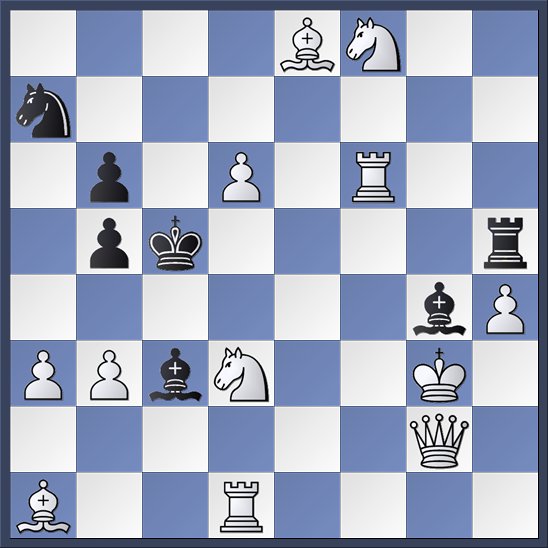
The black king can now escape to d4. This is because the black bishop cuts off the white bishop's defense of d4, while the white knight cuts off the rook's defense of the same square. That is why the white knight must choose e4 as its destination.
So what we have is not a dual, but rather dual avoidance. That is, we have a situation in which a superficial look at the position makes it look like white has two ways of achieving his goal, but more careful analysis reveals that one way fails for a subtle reason.
Actually, we can be more specific. In this case, the dual is avoided specifically because black's defense interferes with a white piece, meaning that white must avoid the continuation that would interfere with a different piece. This is referred to as the Java theme, since the composer who pioneered it was living in Java at the time.
We're not finished. Black has another pair of defenses. I won't spell these out in quite as much detail. We have the line 1. ... Bf3 2. Ne6 mate.

Black's defense interfered with the white queen's defense of c6. That precluded white from playing 2. Nd7, since doing so would interfere with the white bishop on e8, thereby giving the black king a flight square on c6.
And after 1. ... Bxd1 white must play 2. Nd7 mate.
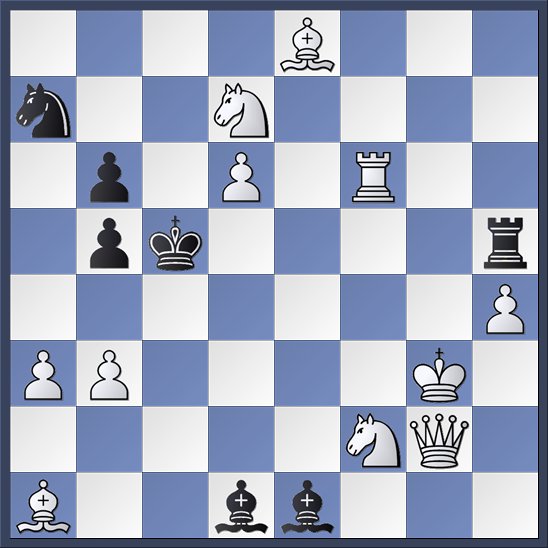
Black's defense removed one defender of the d6 square. This forced white to avoid the move 2. Ne6, since this move would have interfered with the white rook on f6, thereby making it possible for the black king to escape to d6.
This last line is slightly impure, since black captured a white piece instead of merely interfering with it. But that is a small weakness and this remains a very enjoyable problem.
See you next week!
- Log in to post comments

dual.... dual avoidance.... java theme.... hmm,,, all terms I have never heard before. You're doing a good job educating here, Jason. You figuring a book, perhaps? Looks like you should, you make these quite enjoyable to look at & fiddle with.
Hi Bill. Glad you enjoy the series. As it happens though, the book you refer to has already been written. More than once, actually. One of my main references for this series is a book called Chess Wizardry: The New ABC of Chess Problems, by John Rice, published by Batsford a while back. Another one I use is Secrets of Spectacular Chess, by Levitt and Friedgood, published by Everyman Chess.